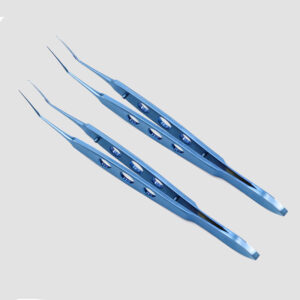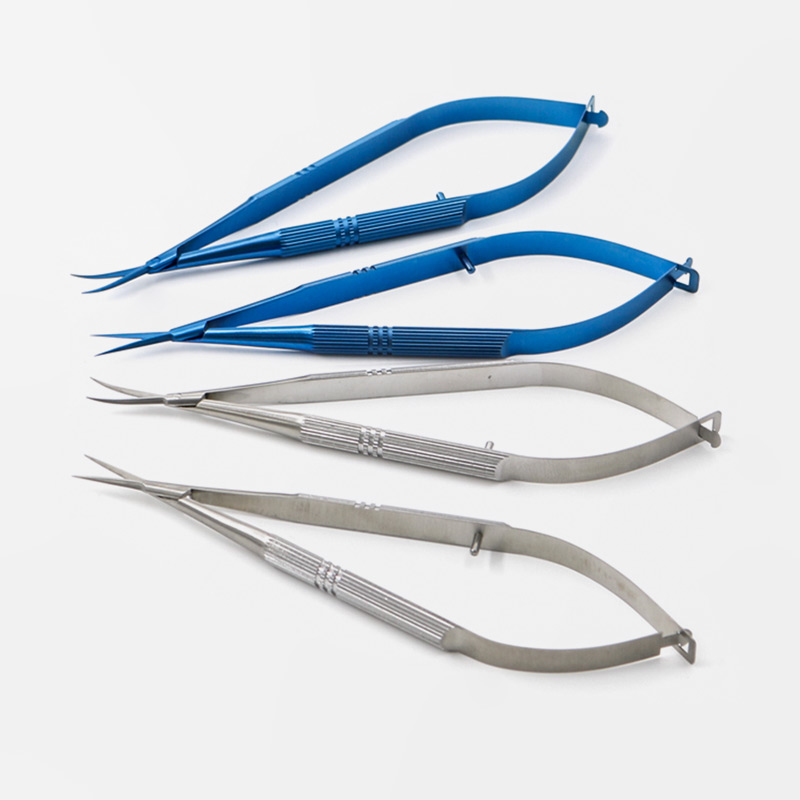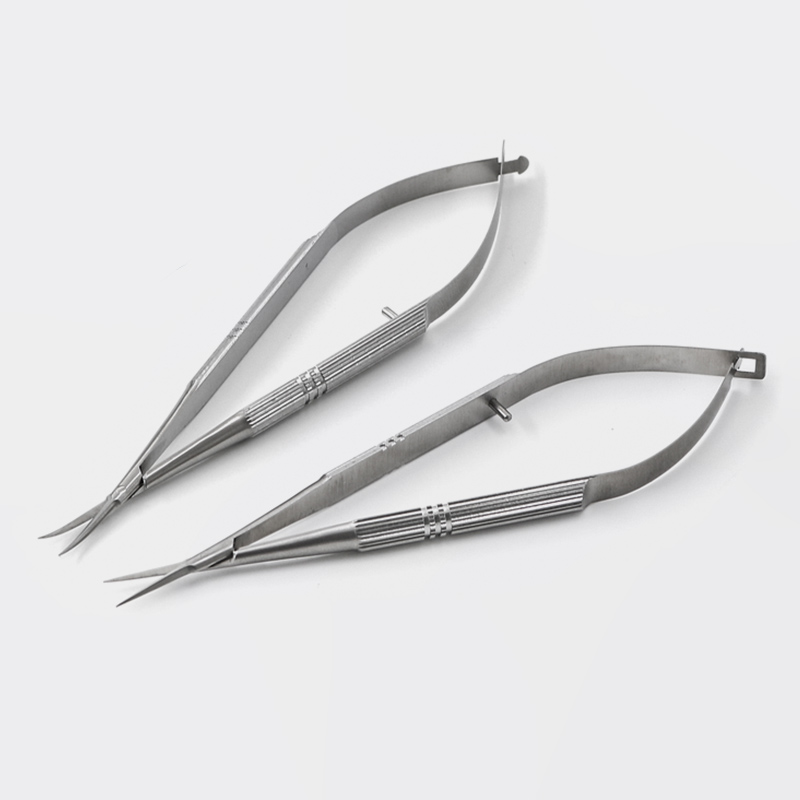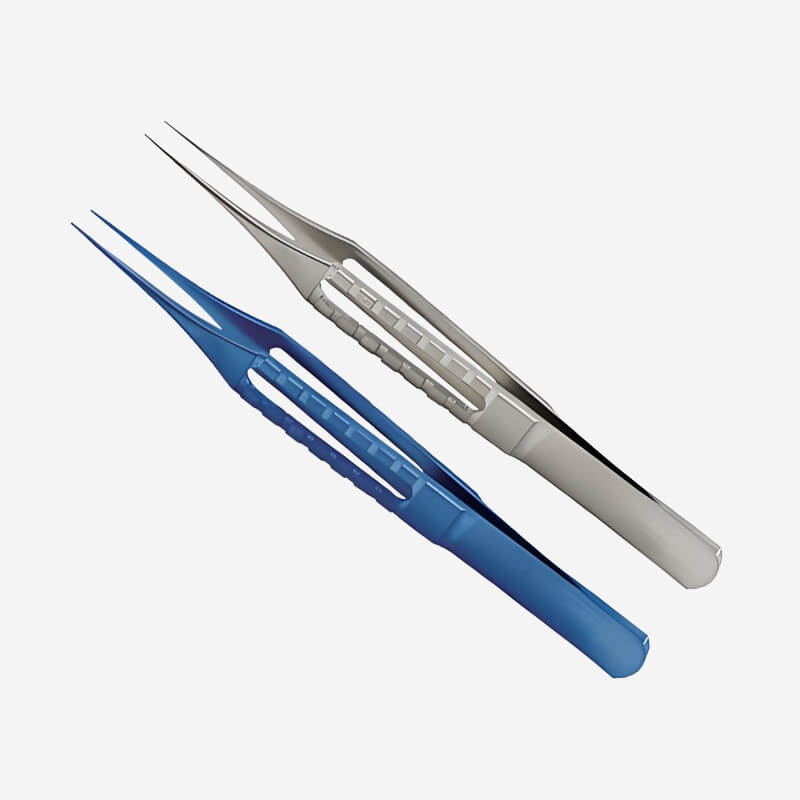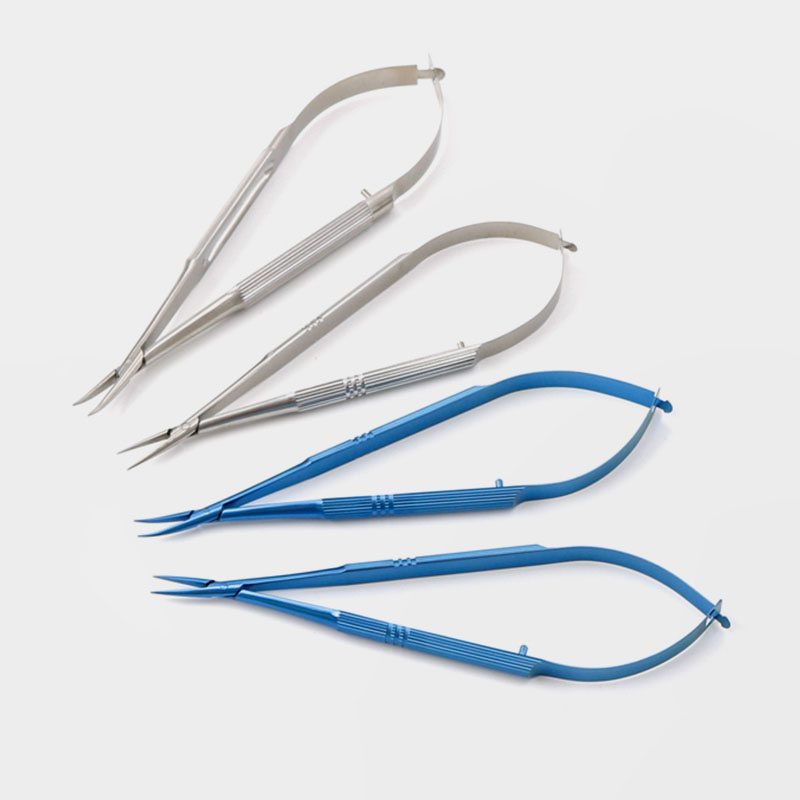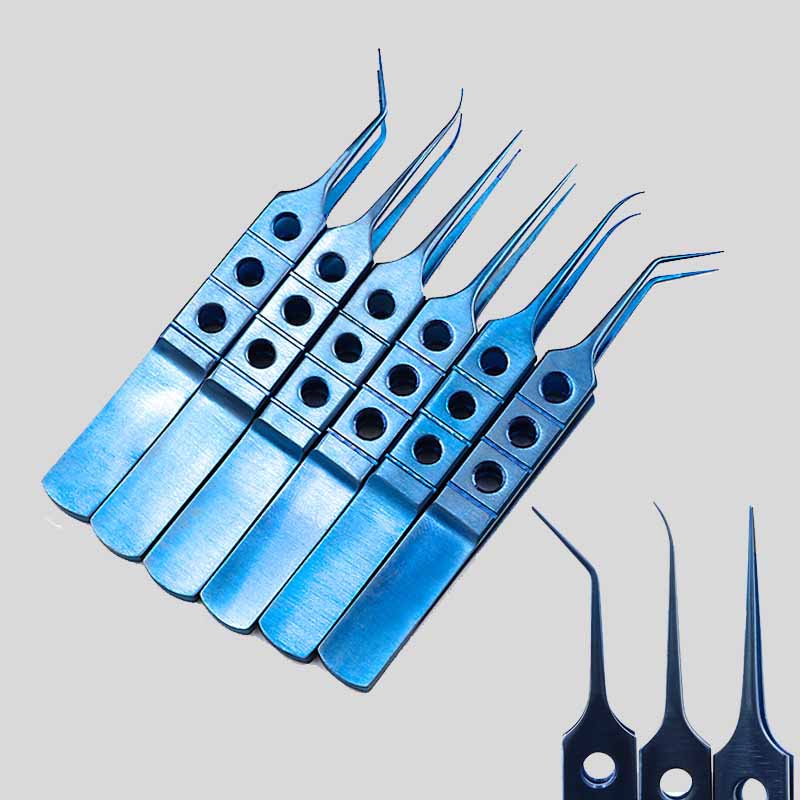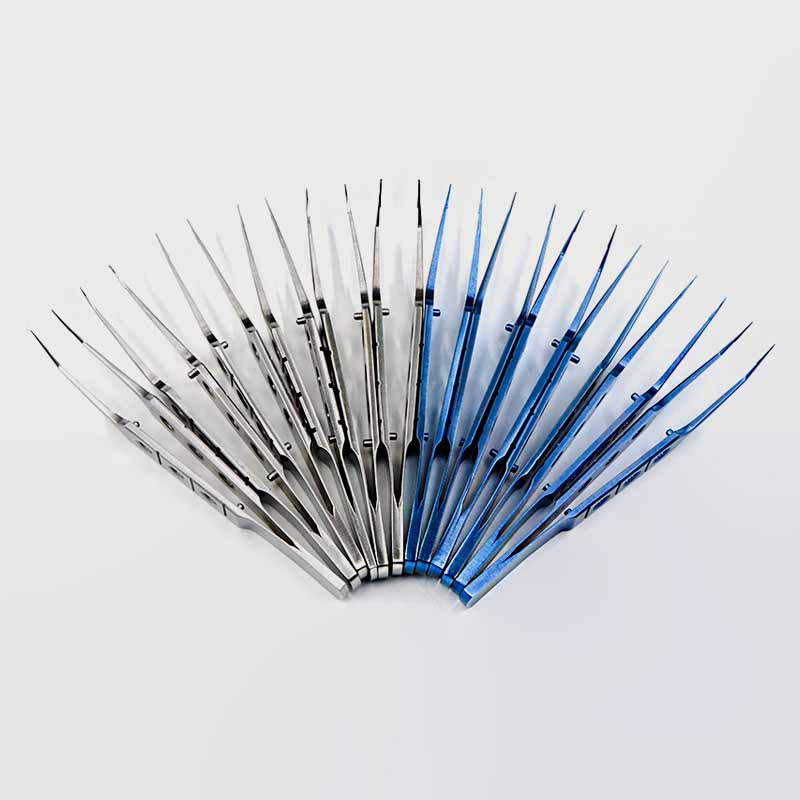Introduction to Capsulorhexis Forceps
The capsulorhexis forceps is a medical device that is commonly used in surgery to hold tissue or organs for cutting or suturing. Its name comes from its primary function, which is to hold and tear a tissue or organ called a “sac”. The capsulorhexis forceps is a precision tool used by a physician or surgeon and requires specialized training and licensing to use.
The design of the capsulorhexis forceps is very simple and usually consists of two arms, each with a clamp. These clamps can be controlled by a switch or handle that allows them to hold and release tissue or organs. The clamps of the capsulorhexis forceps are usually sharp so as to be able to easily grip and tear the tissue or organ. In addition, capsulorhexis forceps can be equipped with various accessories such as lights, cameras, and suction devices for better handling by the surgeon.
Capsulorhexis forceps are widely used in various surgeries, including heart surgery, liver surgery, kidney surgery, gallbladder surgery, gynecological surgery, and so on. During these surgeries, capsulorhexis forceps are often used to pinch and tear tissues or organs so that the surgeon can perform the surgery better. Capsulorhexis forceps can also be used to remove foreign objects such as fish spines and glass fragments.
There are a few things to keep in mind when using capsulorhexis forceps. First, the doctor must be specially trained and licensed to use capsulorhexis forceps. Second, the doctor must carefully check that the clamps of the capsulorhexis forceps are sharp enough to hold and tear the tissue or organ. Finally, the doctor must make sure that the forceps clamps are not damaged or deformed in a way that could cause harm to the patient.
In conclusion, the capsulorhexis forceps is a very important medical device that is widely used in various surgical procedures. It has a simple design but requires specialized training and licensing to use. The use of capsulorhexis forceps requires some attention to ensure the safety and success of the procedure.
Different Types of Capsulorhexis Forceps
Capsulorhexis forceps are an essential tool used in cataract surgery to create a precise and well-defined opening in the lens capsule. This step is crucial in ensuring a successful cataract surgery as it allows for proper placement of the intraocular lens (IOL) and ensures its stability.
There are several different types of capsulorhexis forceps available, each designed with unique features to cater to different surgical approaches and techniques. In this section, we will discuss some of the most commonly used capsulorhexis forceps and their specific functions.
- Utrata Capsulorhexis Forceps: These forceps have wide jaws that are ideal for creating a large-diameter capsulotomy, making them suitable for surgeries involving larger IOLs or complicated cataracts. The tips of these forceps also have serrated edges, allowing for better grip and control during the rhexis creation process.
2. Masket Capsulorhexis Forceps: These forceps have small angled tips that make them perfect for creating a smaller diameter capsulotomy, which is often required in surgeries with smaller IOLs or narrow pupil cases. The short shaft design also offers improved maneuverability and precision during surgery.
3.McPherson Capsulorhexis Forceps: These forceps have fine pointed tips with serrated edges that allow for controlled tearing of the anterior capsule during rhexis creation. They are particularly useful in cases where there is minimal room within the anterior chamber or when dealing with dense cataracts.
4. Osher-Barraquer Capsule Holding Forceps: These unique forceps not only aid in creating a well-defined circular capsular opening but also provide support and stabilization of the lens capsule throughout the remainder of the procedure. The curved shape and flat jaws allow for efficient manipulation while minimizing potential trauma to surrounding tissues.
5. Krumeich Double-Forked Capsulorhexis Forceps: These forceps have a double-pronged design with delicate tips that allow for precise and controlled creation of the capsular opening. This design also minimizes the risk of extension of the rhexis beyond the desired diameter, making it ideal for creating perfectly round capsulotomies.
In addition to these specialized capsulorhexis forceps, there are also variations in handle designs, such as spring-loaded handles or angled shafts, which offer improved ergonomics and better visibility during surgery.
It is essential to choose the right type of capsulorhexis forceps based on the specific technique and preference of the surgeon, as well as the characteristics of each individual case. A careful selection of forceps can ensure the successful completion of this critical step in cataract surgery, leading to faster healing and improved visual outcomes for patients.
Key Features of Capsulorhexis Forceps

One of the key features of capsulorhexis forceps is their tip design. The tips of these forceps are specifically crafted to have sharp blades with smooth edges that help in creating precise and uniform capsulorhexis without causing any damage to surrounding tissues. The sharp edges also make it easier for surgeons to initiate and maintain control during the rhexis creation.
Another important aspect of these forceps is their ergonomic design. Most capsulorhexis forceps come with fine finger loops that provide stability and comfort to surgeons while performing delicate procedures like capsulorhexis formation. The length, curvature, and thickness of the handles are also designed for better grip and control during surgeries.
The material used in making these forceps also plays a significant role in their functioning. Titanium or stainless steel are commonly used materials because they offer strength, durability, and biocompatibility. These properties ensure that the instrument remains sterile and does not corrode or break easily during surgeries.
In addition to its primary function in creating precisely sized rhexis, capsulorhexis forceps can also be used for other tasks during cataract surgery. These include grasping and maneuvering the lens capsule, assisting in hydro dissection, and removing any remaining lens cortex.
Capsulorhexis forceps are an essential tool in modern cataract surgeries. Their sharp tips, ergonomic design, durable materials, adjustable mechanism, and versatility make them a must-have instrument for every ophthalmic surgical team. So if you are planning to undergo cataract surgery or are interested in the field of Ophthalmology, understanding these key features of capsulorhexis forceps is crucial.
Capsulorhexis Forceps Uses
1. Tissue cutting
One of the main roles of the capsulorhexis forceps is to cut tissue. During surgery, the surgeon may need to cut some tissues for a better operation. The capsulorhexis forceps can easily cut tissues such as muscles, ligaments, and blood vessels, and the edges of the cut tissues are relatively flat without excessive blood loss.
2. Clamping Tissue
In addition to cutting tissues, capsulorhexis forceps can also be used to clamp tissues. During surgery, the surgeon needs to clamp some tissues for a better operation. The capsulorhexis forceps can hold tissues of various sizes and the holding force is relatively strong so that it does not come loose easily.
3. Tearing Tissue
Sometimes, the surgeon needs to tear some tissues apart for better surgery. The capsulorhexis forceps can easily tear the tissue apart and the edges of the torn tissue are relatively flat without excessive blood loss.
4. Reduction of surgical time
The use of capsulorhexis forceps reduces surgical time because it cuts, clamps, or tears tissue quickly. Time is very important in surgery because the longer the procedure takes, the greater the risk to the patient. The use of capsulorhexis forceps reduces the duration of the procedure and therefore reduces the risk to the patient.
5. Reduced bleeding
The use of capsulorhexis forceps reduces bleeding because it can easily cut, pinch or tear the tissue and the edges of the cut tissue are flatter without excessive blood loss.
6. Better protection of surrounding tissue
Surrounding tissue is better protected with the use of capsulorhexis forceps because it can precisely cut, clip or tear the tissue without damaging the surrounding tissue. This is very important to the success of the procedure as the patient will have a longer recovery time if the surrounding tissue is damaged.
7. Improved quality of surgery
The use of capsulorhexis forceps improves the quality of the procedure because it can cut, pinch, or tear tissue with precision, resulting in a more delicate procedure. This is very important to the success of the procedure because the quality of the procedure directly affects the patient’s recovery time and quality of life.
How to use tearing capsulorhexis forceps
First, the structure and classification of the torn capsulorhexis forceps
The capsulorhexis forceps consist of three parts: handle, clamping forceps, and elastic splint. According to the shape and length of the clamping forceps, capsulorhexis forceps can be divided into straight clamp type, curved clamp type, and long clamp type three.
Straight-type capsulorhexis forceps clamping forceps ends are straight, and suitable for removing smaller tissues, such as the gallbladder, appendix, etc… The curved type capsulorhexis forceps holding forceps ends are curved, suitable for removing deeper parts of the tissue, such as the uterus, and fallopian tubes. Long clamp type capsulorhexis forceps clamping forceps length is longer, suitable for removing deeper parts of the tissue, such as the lungs, and abdominal cavity.
Second, the use of capsulorhexis forceps
- Preparation
Before using the capsulorhexis forceps, it is necessary to carry out preparatory work. First of all, you need to check whether the instrument is intact, whether the clamp is flexible, whether the handle is firm. Secondly, the instruments need to be sterilized to ensure the hygiene and safety of the surgical environment.
- Preoperative preparation
Before surgery, a comprehensive assessment of the patient is needed, including the patient’s medical history, physical examination, laboratory tests, and so on. At the same time, patients need to be informed of the risks and precautions of the operation so that they can be psychologically prepared.
- Operation steps
(1) Hold the torn capsulorhexis forceps by the handle, so that the clamping forceps are spread to a suitable angle.
(2) Insert the forceps into the body cavity and find the tissue to be removed.
(3) Align the ends of the forceps with the tissue to be removed and clamp firmly.
(4) Slowly pull the forceps out of the body cavity while removing the tissue by hand or with the aid of other instruments.
(5) Return the clamp to its original position, clean, and sterilize.
Precautions for Capsulorhexis Forceps
The appropriate type and length should be selected and hygiene and sterilization should be observed in order to avoid unnecessary harm to the patient.
- Choose the appropriate model and length to clamp the tissue to be removed.
- Excessive force should be avoided during operation to avoid damage to the tissue.
- Hygiene should be observed during the operation to avoid cross-infection.
- After the operation, the instruments should be cleaned and sterilized in time to ensure the safety of the next use

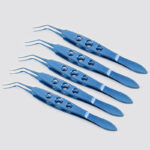 Capsulorhexis Forceps
Capsulorhexis Forceps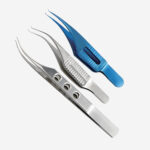 Suture Forceps
Suture Forceps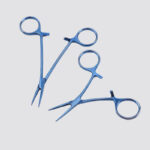 Hemostatic Forceps
Hemostatic Forceps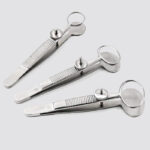 Chalazion Forceps
Chalazion Forceps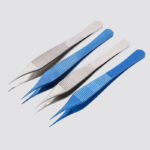 Adson Forceps
Adson Forceps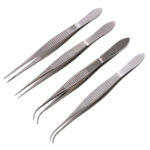 Tissue Forceps
Tissue Forceps
